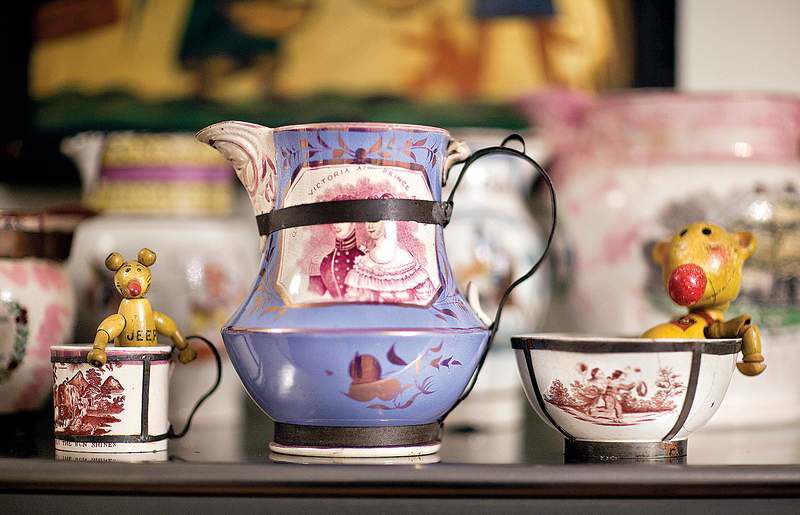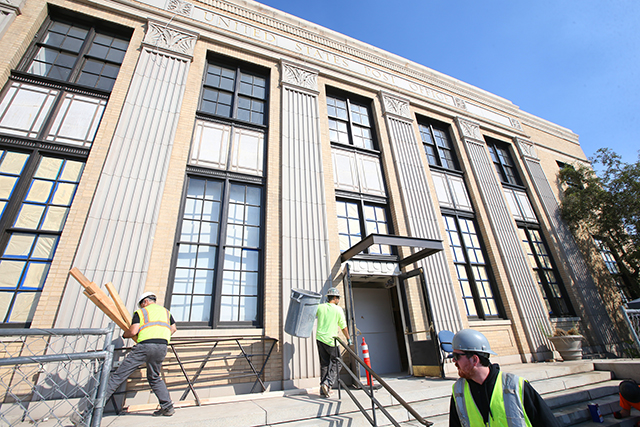The fix is in: finding beauty in the broken
Published 4:00 am Sunday, December 19, 2010

- Three 19th century objects repaired with add-on metal armatures and handles are displayed at Andrew Baseman's apartment in New York. “I call them the orphans of the antiques world,” said Baseman, 50, an interior designer, of his collection of domestic objects dating back centuries that bear evidence of having been broken and repaired in unusual and often artful ways.
Reuse is all the rage these days: Witness the rise of fixers, tinkerers and hackers — that scrappy set of do-it-yourselfers who gather in collectives from Brooklyn to Berlin to breathe new life into broken objects that would have been consigned to the junk heap a few years earlier.
It turns out, though, that the current fixing fad is just another instance of history repeating itself.
Trending
“I call them the orphans of the antiques world,” said Andrew Baseman, 50, an interior designer in Manhattan, referring to his collection of what are often called make-do’s — domestic objects dating back centuries that bear evidence of having been broken and repaired in unusual and often artful ways.
Scattered throughout the Chelsea apartment that Baseman shares with his partner, Mark Randall, 51 — and their upstate New York farmhouse — are more than 300 stunning examples of historical “hacks,” to use the parlance of today’s fixer culture. Baseman’s objects may be centuries-old antiques, but they have a deconstructed aesthetic that would look equally at home in a high-end SoHo design store or at Milan’s annual furniture fair.
There is a surprising set of blue-and-white 18th-century Chinese export plates that were broken into pieces and fused back together with a train track of metal-wire staples. There is an array of 18th- and 19th-century teapots, jugs, cups and mugs — made of porcelain, pottery, glass and metal, among other things — whose broken handles, spouts and bases have been replaced with new ones made of tin, pewter, bronze, silver and wood. There is even a selection of toys.
“I’m amazed in some cases that these objects didn’t get thrown away,” said Baseman, handling a small cast-lead dog from the 1930s whose missing leg was replaced by a nail.
For someone like Baseman, though, broken is beautiful. “The scrappier the better,” he said.
He offers up his favorite possession as a case in point: a 1920s Eastern European teapot he bought five years ago for $40. Polka-dotted and diminutive, it has at least five repairs, including an add-on aluminum base (hand-hammered), 18 staples and rivets (hand- and machine-made), grafted bits of porcelain (from another lid), twisted wire (to attach the lid to the handle) and a tin patch on the side. “It’s almost too good to be true,” he said.
Trending
Fine repairs
Not all make-do’s are so cobbled together. For every glass attached to a clunky wooden base in Baseman’s collection, there is a piece of fine porcelain that has been enhanced in appearance and function, sometimes with expertly wrought silver handles or gold cuffs. “The level of repair really reveals the status of the owner,” he noted.
His oldest objects are a pair of 17th-century Kangxi period porcelain miniature vases that he cradles in his hands, careful not to crush the finely crafted hallmark silver mounts that were added in Holland in the mid-1800s.
Baseman, whose parents were antiques dealers in the Berkshires, remembers seeing his first make-do when he was a boy: a stapled plate stowed in a cupboard of objects that wouldn’t sell.
When he was a teenager, his mother took him to visit a friend with a collection of inventively repaired teapots, and Baseman was fascinated. “It was the beautiful china I had grown up with,” he said, “but with spouts and handles that were just so cool.”
In his early 20s, he began traveling to London, where he would see similar objects for sale for a pittance at the Portobello Market, and he was hooked. He has since been building his collection and writing about it on his blog, Past Imperfect. Although Baseman notes on his blog that make-do objects can be found at established institutions like the Metropolitan Museum of Art, he maintains that historically they have largely been overlooked. There is evidence that this is changing, though. In 2009, the Smithsonian’s Freer Gallery of Art in Washington mounted an exhibition called “Golden Seams: The Japanese Art of Mending Ceramics,” which focused on kintsugi, or repairs made with lacquer and powdered gold.
Broken on purpose
Legend has it that this technique was developed after the 15th-century shogun Ashikaga Yoshimasa sent his favorite celadon tea bowl back to China to be fixed and was displeased with the chunky staples that were used to repair it. By the 17th century, kintsugi was such a fashionable phenomenon that some people were known to smash their tea bowls on purpose in order to embed them with golden-veined repairs.
The Japanese, of course, have a well-documented appreciation of the wonky and worn down, having developed an aesthetic philosophy around it in the form of wabi-sabi. But what about Americans, who are used to the promise of things shiny and new — or if not new, then at least perfect?
As David Revere McFadden, the chief curator at the Museum of Arts and Design in Manhattan, observed, “Make-do’s definitely used to be considered the downside of decorative arts.” McFadden developed an interest in such objects when he was a curator at the Smithsonian’s Cooper-Hewitt, National Design Museum, from 1978 to 1995, and started noticing examples in the collection. He is one of a number of people who believe that the make-do moment has come.
“There is something profoundly human about these repairs,” he said. “They’ve been around from Day 1, since the first hunter broke his first spear.”








